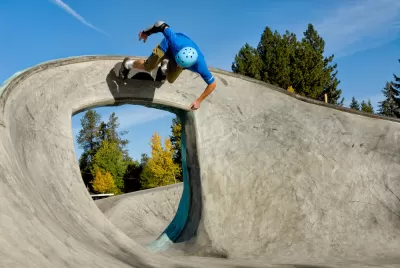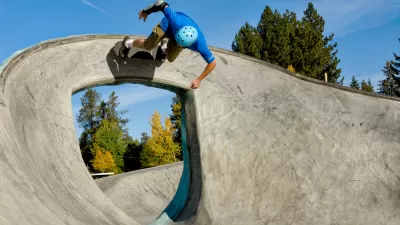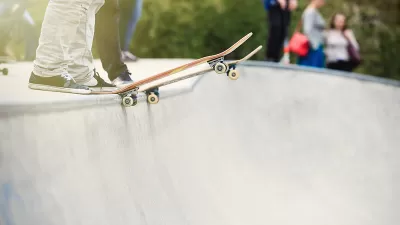More cities around the country are embracing skateparks as a vital part of park design, leading to a new wave of urban design standards tailored for skateboarders.

As Cassie Owens writes on Next City, the proliferation of skate parks around the country marks the surge of skateboarders becoming more civically engaged that want to take urban design seriously. In Owens word, "the kids who clung to their boards in the ’80s and ’90s have grown up, some of them into advocates." This advocacy is seen all across the United States as various cities such as San Antonio, Seattle, Portland, and Philadelphia begin designing skate plaza programs, skate spots, and even skateboard routes.
With upwards of 12 million skaters in the US according to market research firm Board-Trac, these suburban and urban dwellers are looking for legal spots to practice their craft. Even though skating activists often have to push state, city, and private funders to raise millions of dollars for these projects (as in the case of Franklin's Paine Skatepark in Philadelphia), cities see these investments as ways to potentially curtail illegal, unauthorized skating.
However, many times these design implementations can be simple fixtures less than 1,500 ft. Indeed, Owens illustrates how the, "range of design options allow planners to start small when cash-strapped and reach audiences outside of teens with dreams of making the X Games. And with the diversity found among skateboarders, building a new bowl in the neighborhood may not stir fears of gentrification as other projects might."
FULL STORY: “Skateboard Urbanism” Could Change Park Planning

Planetizen Federal Action Tracker
A weekly monitor of how Trump’s orders and actions are impacting planners and planning in America.

Chicago’s Ghost Rails
Just beneath the surface of the modern city lie the remnants of its expansive early 20th-century streetcar system.

San Antonio and Austin are Fusing Into one Massive Megaregion
The region spanning the two central Texas cities is growing fast, posing challenges for local infrastructure and water supplies.

Since Zion's Shuttles Went Electric “The Smog is Gone”
Visitors to Zion National Park can enjoy the canyon via the nation’s first fully electric park shuttle system.

Trump Distributing DOT Safety Funds at 1/10 Rate of Biden
Funds for Safe Streets and other transportation safety and equity programs are being held up by administrative reviews and conflicts with the Trump administration’s priorities.

German Cities Subsidize Taxis for Women Amid Wave of Violence
Free or low-cost taxi rides can help women navigate cities more safely, but critics say the programs don't address the root causes of violence against women.
Urban Design for Planners 1: Software Tools
This six-course series explores essential urban design concepts using open source software and equips planners with the tools they need to participate fully in the urban design process.
Planning for Universal Design
Learn the tools for implementing Universal Design in planning regulations.
planning NEXT
Appalachian Highlands Housing Partners
Mpact (founded as Rail~Volution)
City of Camden Redevelopment Agency
City of Astoria
City of Portland
City of Laramie




























